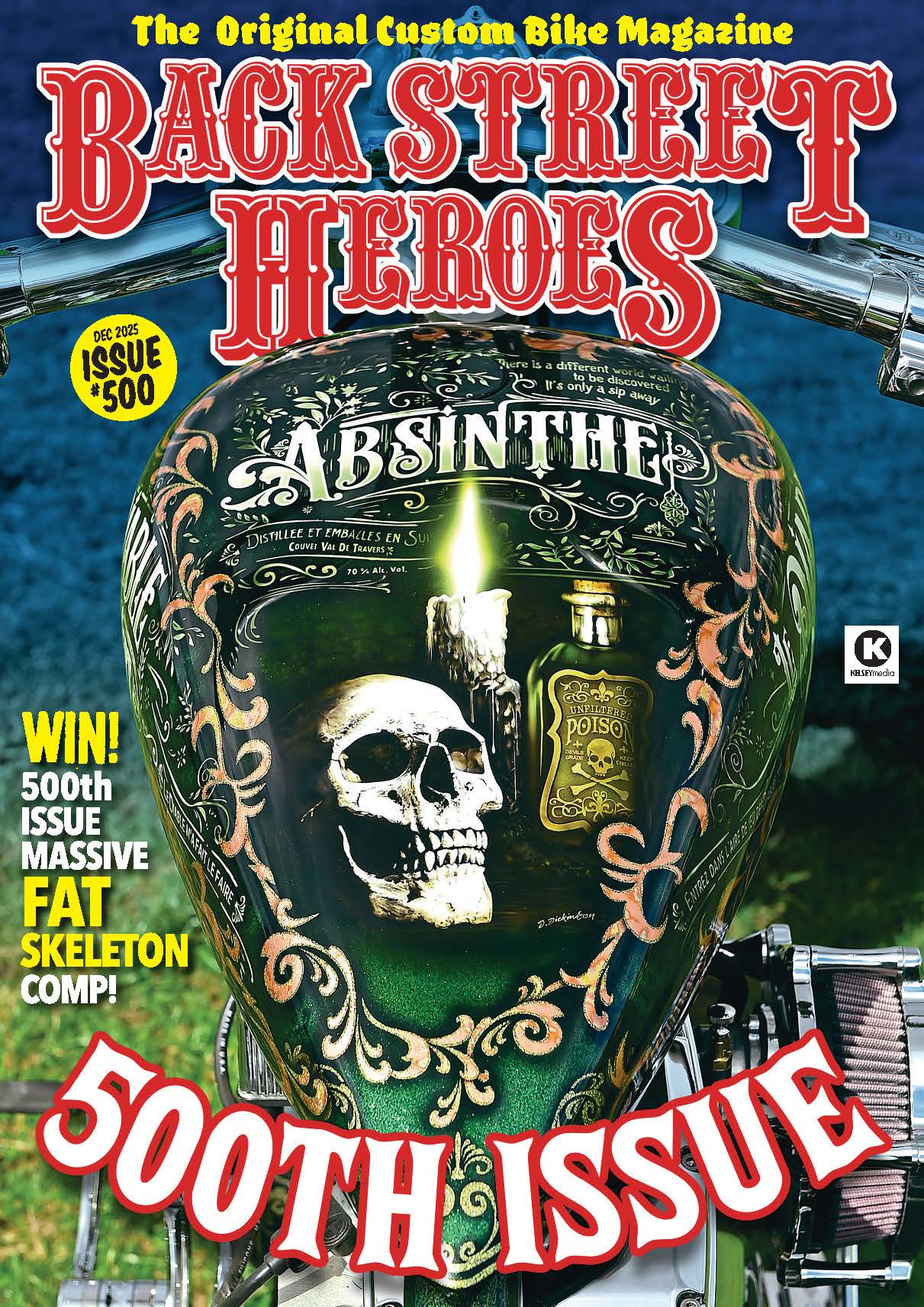Back in the early 1970s, the custom motorcycle scene was in its relative infancy but, following the success of the film Easy Rider, suddenly choppers were the new thing. The scene took a whole new direction, and like-minded people began building them which, in turn, lead to the establishment of a motorcycle club dedicated purely to riders and builders of custom machinery.

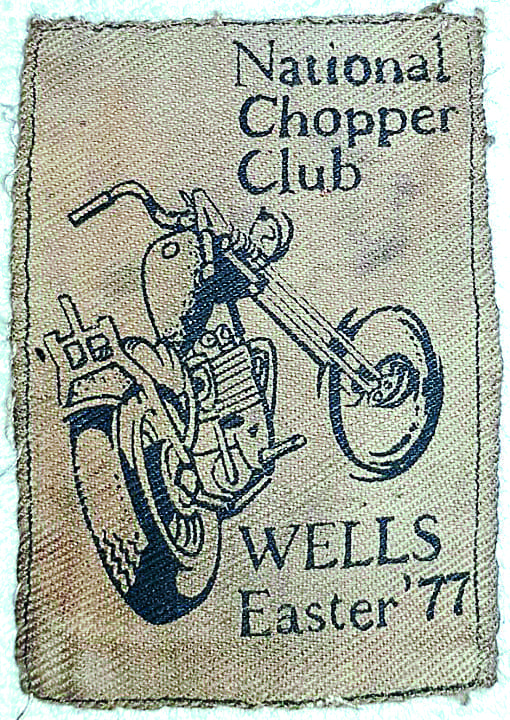
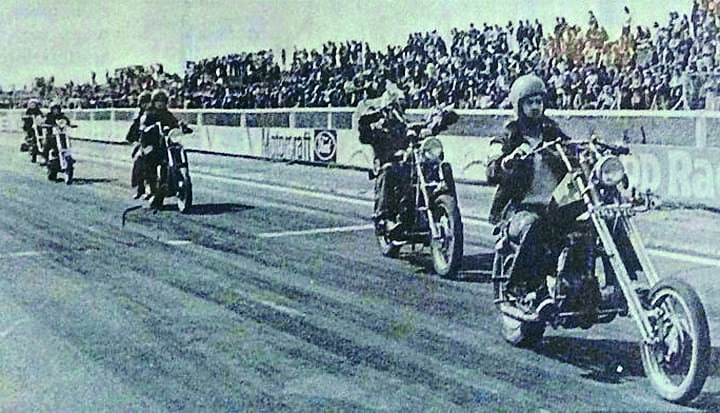
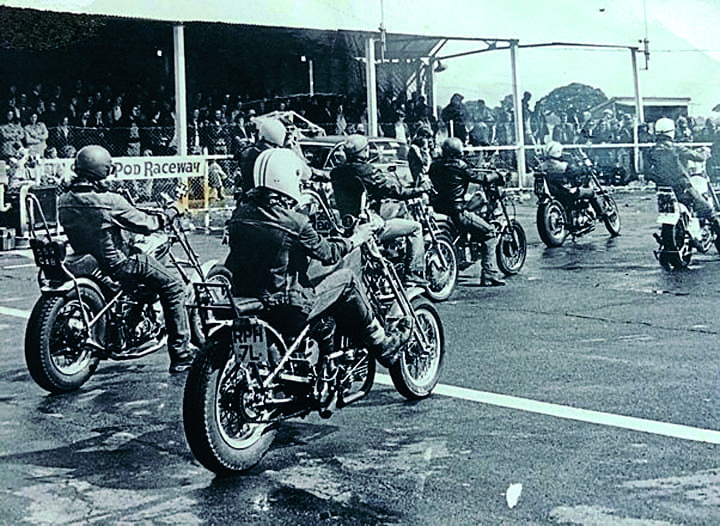
Words by Nik, with help from Andy NCC Pics from NCC Archive
Chopper and custom enthusiasts tended to meet locally, and had little chance to see what was happening nationally. The only magazines available at that time were Easyriders, Iron Horse, and other foreign publications. A guy by the name of Bill Gill, obsessed with this new style, had started to look for like-minded folk, and’d met several individuals thinking along the same lines and, by 1971, they were calling themselves the Kent Chopper Club. He knew that they couldn’t be the only ones in the country with the same passion, thinking there must be bikers out there doing the same.
Enjoy everything More Bikes by reading the MoreBikes monthly newspaper. Click here to subscribe, or Read FREE Online.
With some foresight, and a desire to unite chopper riders (at the time, pretty much all outcasts and loners), he put an advert in the Exchange & Mart (remember that?) asking for fellow ‘chopper enthusiasts’ to get in touch. Syd Wellings, who was building bikes in Birmingham and was part of a loose group of chopper riders, and Pete Gaertner, who was doing the exact same thing down in Oxford, both replied to this advert. They started to correspond and exchange ideas, eventually meeting up in the early part of 1972, and the three fledgling groups held several meetings which, partly by their uniqueness, were a great success. Subsequently this led to the suggestion that they should come together under one name: the National Chopper Club. (Bill’d planned to name the club ‘The Mothers of Invention’, to reflect the members and their machinery, but was outvoted.)
In 1973 the National Chopper Club was formed. Its aims in the early days, which haven’t really changed over the years it has to be said, were to, firstly, generate a better understanding between chopper and custom enthusiasts, other road users, and the general public; improve standards in the safety and construction of choppers and custom motorcycles; and, lastly, bring like-minded chopper and custom riders together. Partially lifting a quote from an early Club poster, it states, ‘The National Chopper Club exists to promote, protect and enjoy custom biking in the UK’ and, along with the Club’s subsequent expansion into Europe, Scandinavia, and further afield, this is an ideal that remains close to its heart today.
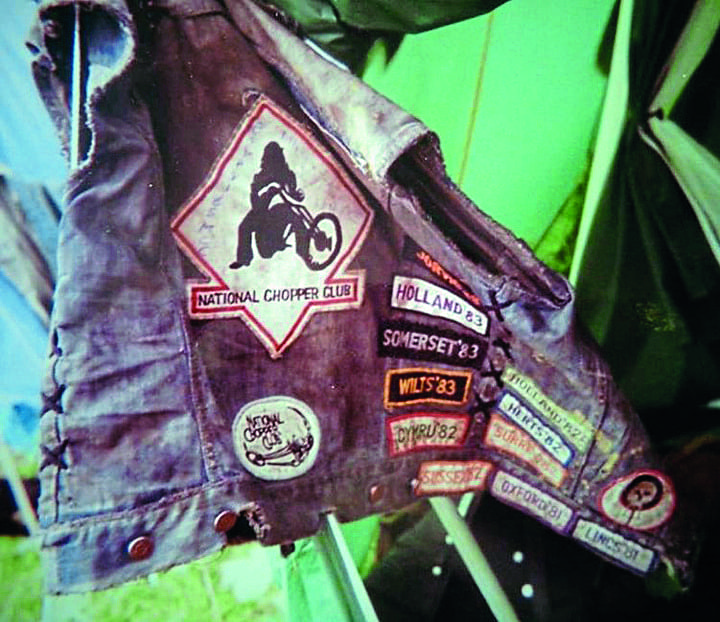
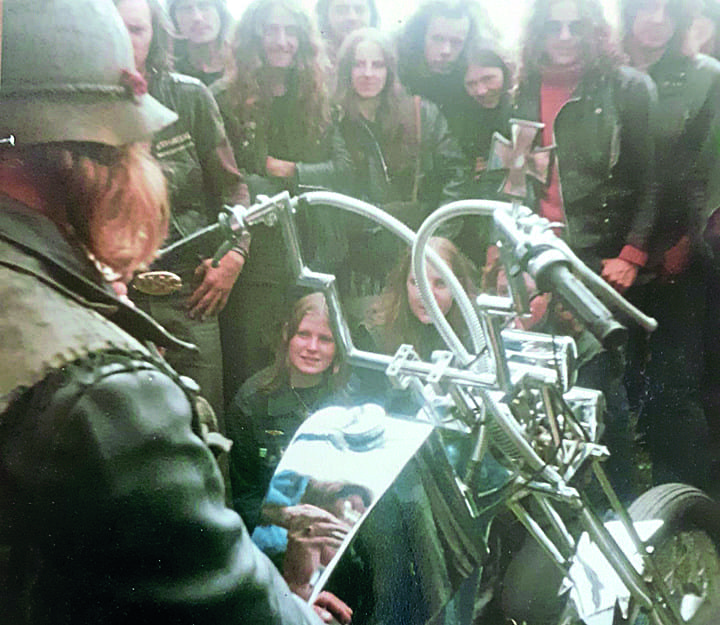
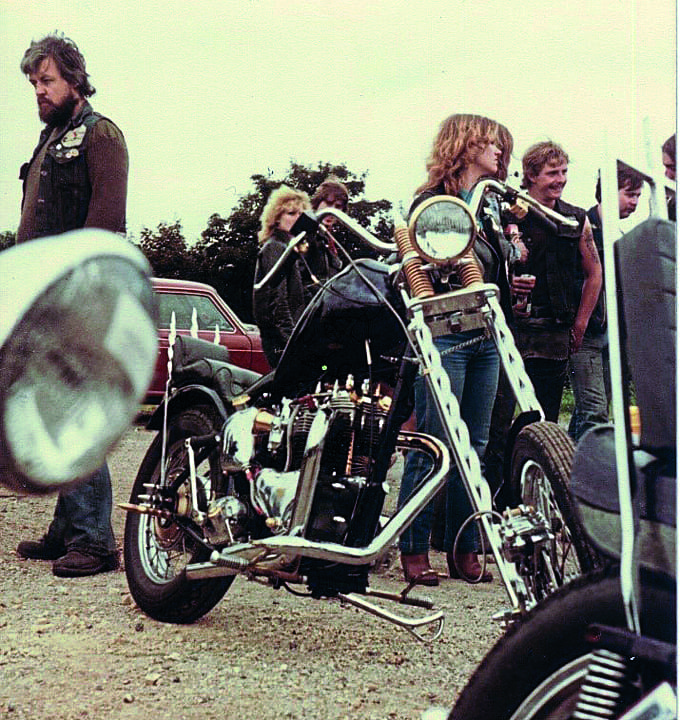
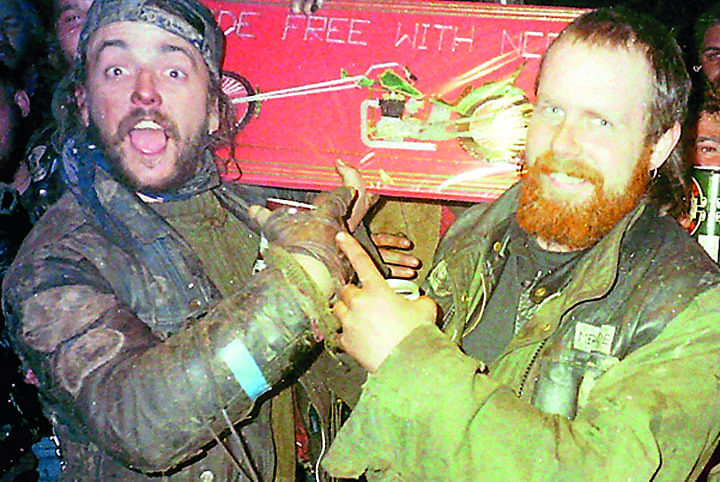


By April 1973, membership was flourishing, and the NCC covered most of the country. Bill was the obvious choice for the first President of the new club, and was appointed in July. Over the next few years a National Committee was set up which, as the Club expanded and membership grew, appointed a Rep (representative) in each county to host meetings in their area. This structure’s still in place today, but Reps now have a lot more power in administering the various stages of achieving full membership and the running of their county, allowing the Committee to oversee the running of the Club as a whole at a national, and international, level.
Originally, members were vetted by the nearest Rep to their area and, if your face (and bike) fitted, you paid your membership and, hey presto, you were an NCC member. Membership back then was a whole one pound! Members were kept informed via a bi-monthly newsletter called Tread News, which developed into the Club’s own magazine called On the Highway. It was decided the Club’d meet at prearranged destinations every Bank Holiday, which came to be named ‘Runs’, and they proved a success with members arriving from all over the country.
The first official National Chopper Club Run took place at Santa Pod Raceway, near Wellingborough, on the August Bank Holiday weekend of 1973, and gave the Club the chance to show off its bikes to the general public, and Bill, Pete and Syd found there were a lot of like-minded people out there who considered banana seats, five-foot sissy-bars and spangly paintwork to be the height of good taste.
By 1974 membership’d swelled to more than 200 across the UK, with 27 county Reps, and the Club put in a considerable amount of miles that year, crisscrossing the country on every Bank Holiday, setting the standard for what was to follow. In 1975, they launched oval arm patches (costing 25p), and the enormously significant milestone of the diamond back-patch (using Stu Garland’s artwork); a momentous decision that, first and foremost, had to be original to reflect their individuality, hence the diamond and no rockers. Having a back-patch, even with no rockers, did lead to run-ins with other clubs, and even saw them investigated by the Police in an enquiry into organised crime!
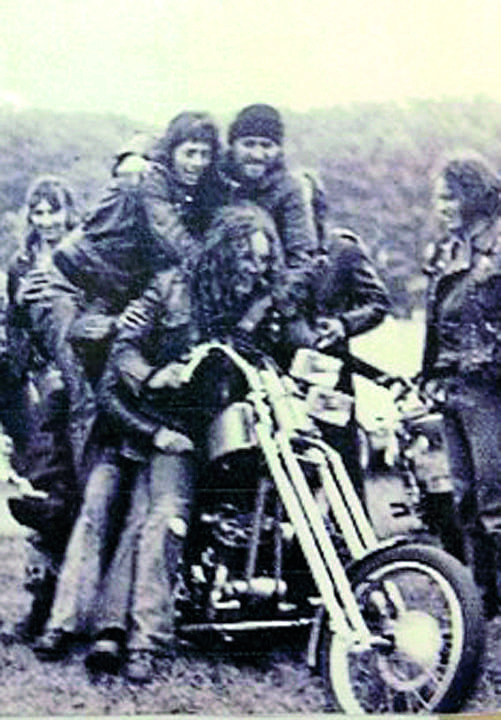
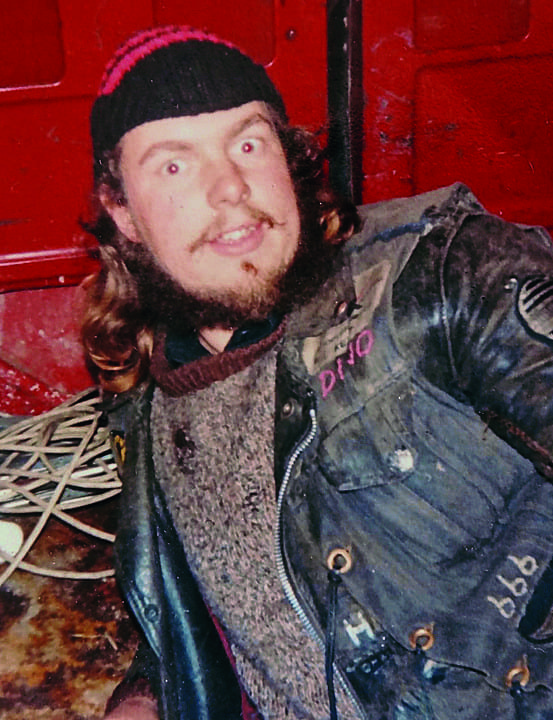
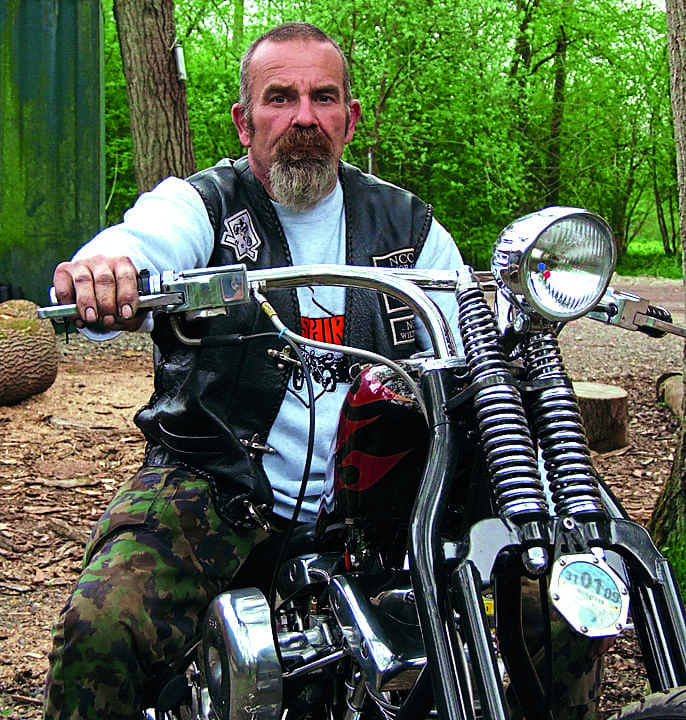

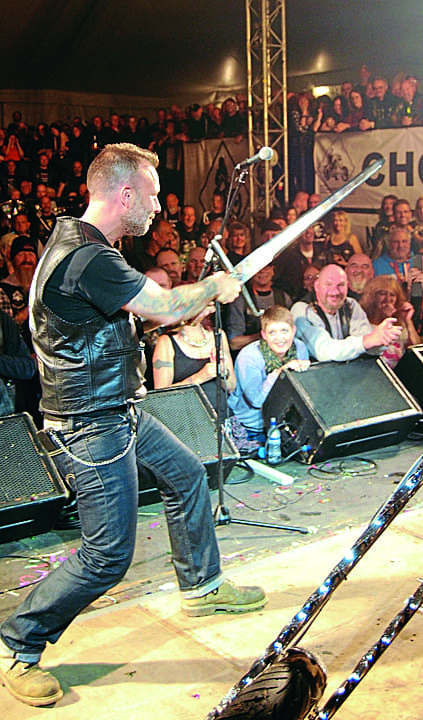
In 1976, the year of the infamous hot summer, the term ‘Chopper Club Cloud’ was coined. After months of cloudless skies, the heavens opened on the Dorset Run, drenching riders and turning the site into a quagmire. The first Euro Run was also organised – 23 members rode to Hagen in Germany, where they partied with the Chosen Few, and went on to a large custom show.
In 1977 the Club found it necessary to hire lands exclusively for their Runs, due to the ever-expanding membership, and the ever-increasing friction between them and the general public on conventional campsites, and the quality of NCC chops was finally being recognised as they made it into Easyriders magazine (No. 46 if you’re interested).
At the Easter (Herts) Run, Bill stepped down as President, and was replaced by Dino from Kent (and the famous exploding gas cylinder incident occurred, see the Chopper Club’s new book for more details if you can get a copy). Dino moved the Club forward, particularly in the quality of the bikes, and he worked tirelessly to make sure Club bikes were seen at all the major custom shows. He also instigated a ‘Run to The Sun’ to the South of France – probably the real start of the Chopper Club’s exploration of Europe.
In 1979, the legendary Nige Bamber (who’d been there from the start) was brought in as Club Secretary, and the number of standard bikes, or ‘stockers’, was being noticed and dealt with. In August, Dino stepped down as President after his agreed year in office, and Boots, the infamous Boots, took the helm, moving the Club forward to stratospheric levels. At the final Run of 1979, in Lincoln, he accidentally rode his chop into a policeman, breaking his finger, who thought he was being clever trying to halt the hundreds of bikes. The foundations for the formation of the first European country to join the Chopper Club were laid when Choppers MC Holland asked to be an affiliate and, after a chaotic weekend visit across the Channel, they began attending Runs.
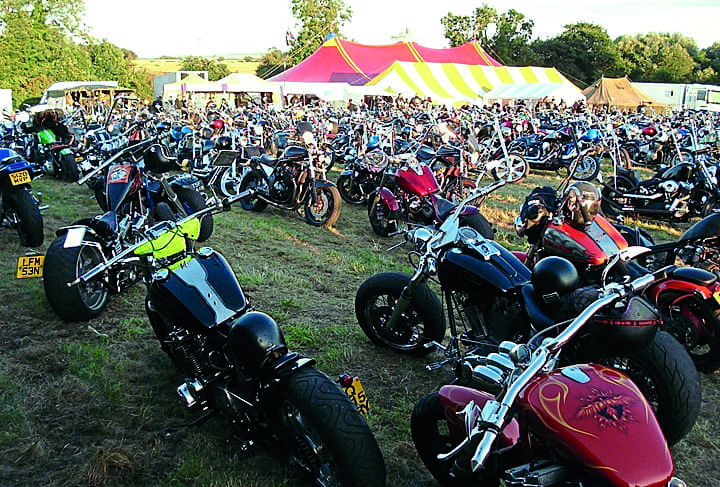
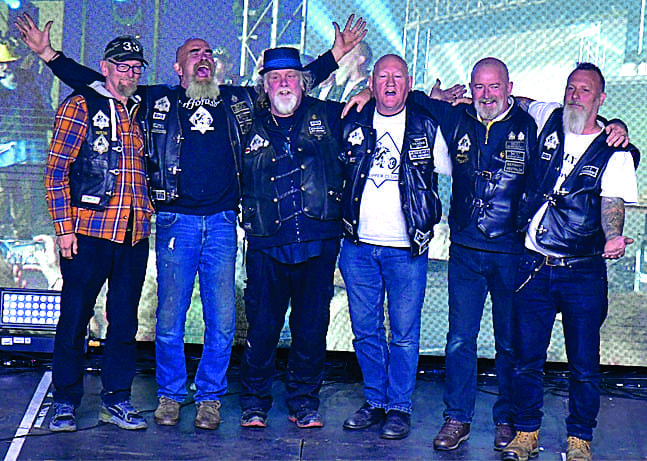


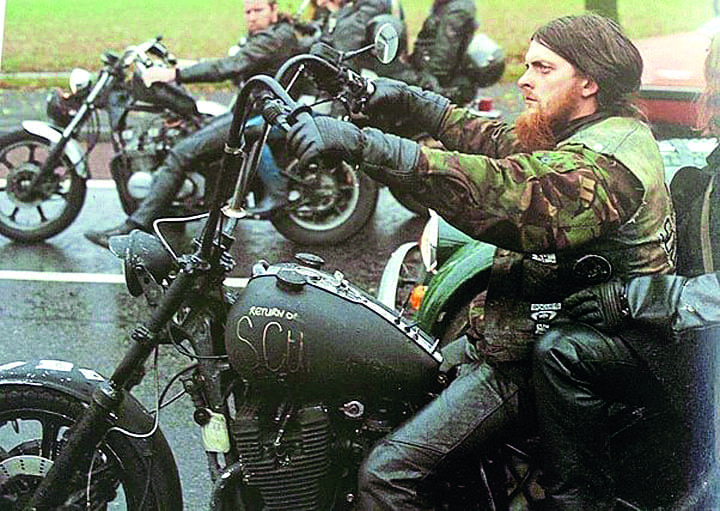
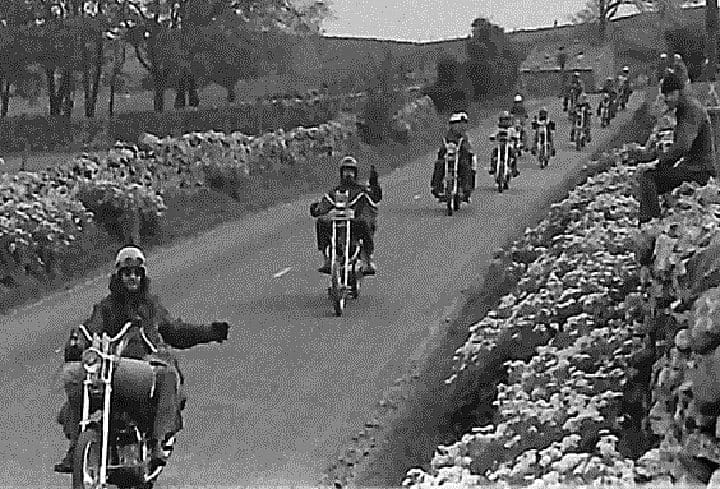
In 1980, Chopper Club Nederland (CCN) was formed and, on the August Run, a film crew followed the Run from start to finish – the finished cut, titled ‘Iron Horse’, went out as a trailer for Star Wars in certain cinemas. Oh, and the end-of-year issue of On the Highway featured the first correspondence from a noteworthy individual from Wales called Hank.
In 1983 the Club was ten years old, so it was a year of celebration. Runs were held in Wiltshire at Easter, Lancashire for Whitsun, and York for August (where the biggest, good-natured, beer can fight took place). To mark the anniversary, a mid-year party was organised, a special edition of On the Highway was printed, and that bloke Hank took over as Run Captain. It was also announced that, at Easter 1985, the Club’d be visiting southern Ireland. It was featured in Superbike magazine, and attended the Bike World Show in Doncaster, with the organisers looking to the NCC as the premier association of custom builders in the UK. Also in 1983, a UK custom bike magazine was launched that would, over the next 40 years, feature many Chopper Club bikes. It was called… let me think… Back Street Heroes, I believe… wonder what happened to it?
In 1984, after some complained of the distance and costs of attending the proposed Ireland un, the National Committee made attendance at the Irish Run compulsory, and those who’d made excuses, rather than valid reasons, were kicked out. Another foothold in the Club’s expansion into Europe was announced, too: the forming of Chopper Club Belgium, under the wing of Chopper Club Nederland. Oh, and the rule about Committee not getting drunk on Runs was binned.
In 1985, the year of the very successful Ireland Run, Hank stepped up to Vice President, and the Club took 12 chops to Bike World ’85 in Doncaster and came away with six trophies. That year, and the year after, NCC Avon ran mine parties at Monkton Farleigh, just outside Bath, in the old Victorian stone mines, hauling in 16 barrels of real ale, two generators, petrol, lights, tables, etc., through a small hole in the side of a hill, then underground along the old mine workings in the dark. A couple of potholers passed them and seeing the wheelbarrows full of barrels, a girl in a leather mini skirt and high heels, and others in varying biker attire, were completely bemused when they were told: “We’re going caving.”
In 1986, at a memorable Beds/Bucks Run, the infamous Chopper Club haircut was first seen as members used Bic razors and (clean) engine oil to get the look; something described as ‘perfectly normal to us at the time.’ They also went to Land’s End for the first time, managed security at the Magna Carta demo, and’d begun fundraising to buy their own land as they weren’t happy that Runs could be shut down on the whim of ‘The Man’. That year, too, Chopper Club Luxembourg were welcomed into the fold, and a second, updated, patch design was drawn up.
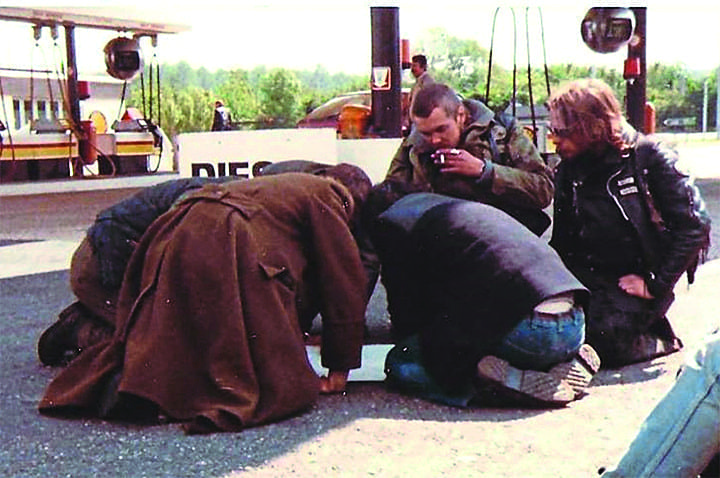
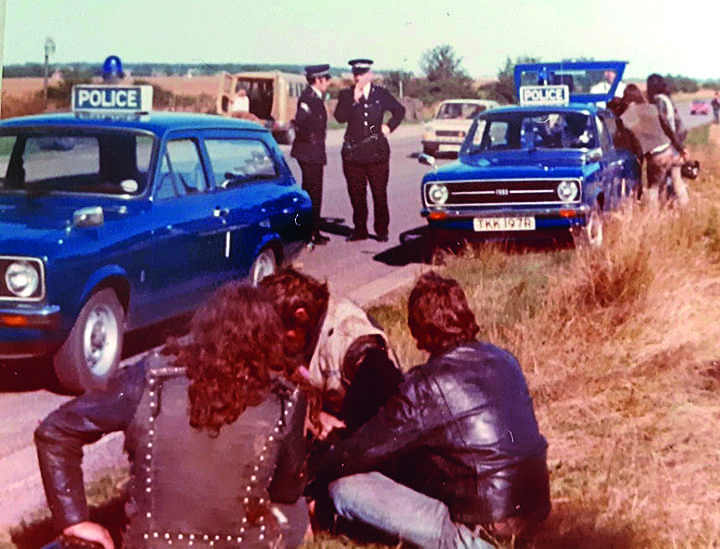

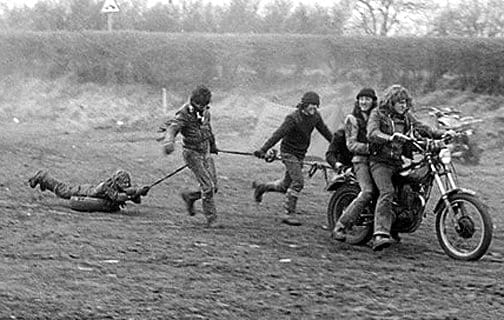
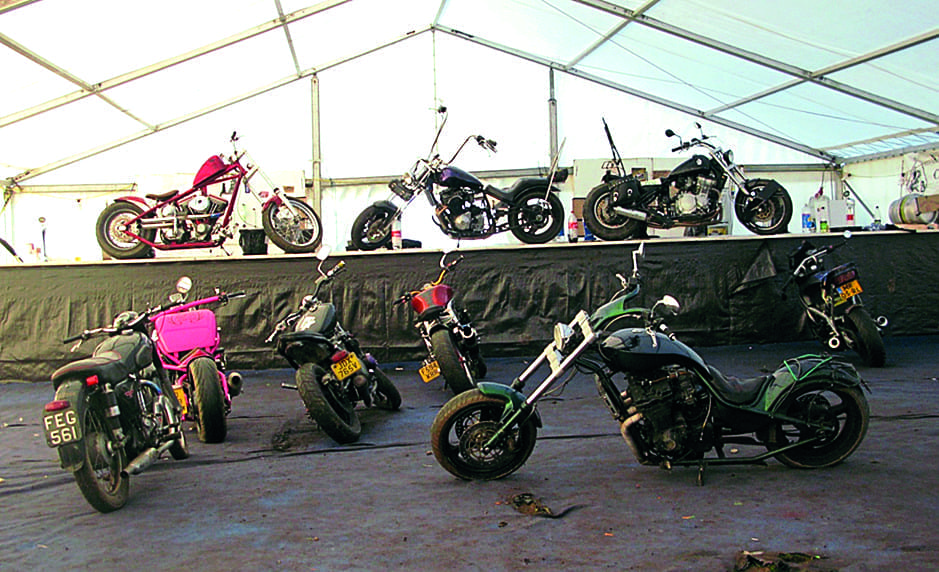

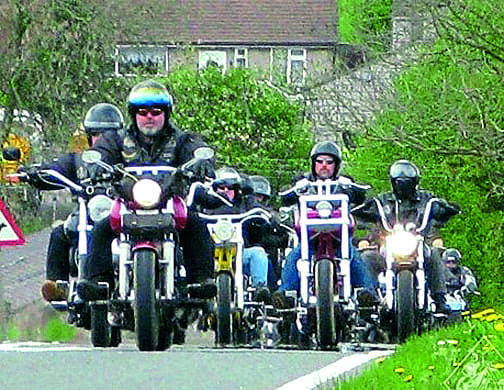
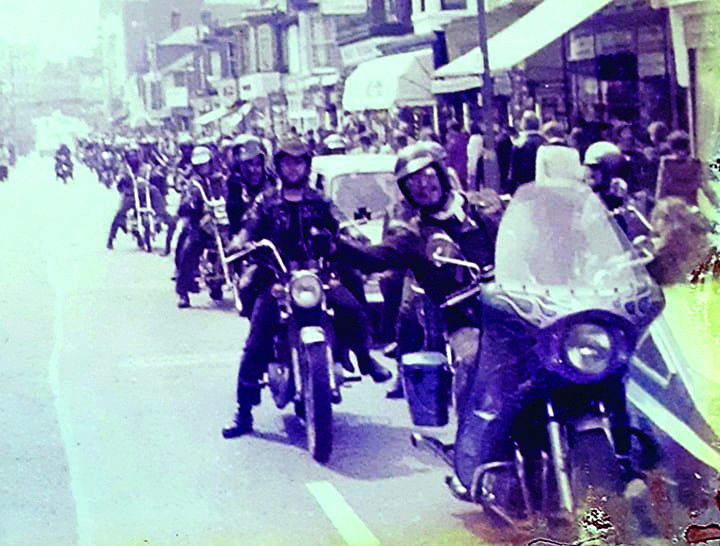
The year 1987 saw the Club invited to Sweden to show some of their bikes at a large custom show, and were featured in the newspapers as ‘The Bearded Face of Anarchy’, courtesy of a local reporter, disgruntled by being held up for eight whole minutes of his precious time at a junction by the Run. A local policeman came to a Run to see what it was all about (in his MK2 Escort panda car), got steaming drunk, tried to ride one of the chops, let them thrash the squad car around the field, and on his departure, did doughnuts backwards across the field. That year’s August Run was to Wales, and was the first ‘Mega Run’, featuring banger racing, fire-eating, and jugglers, and headlined by The Climax Blues Band.
In 1988 they managed to buy their own land just outside the village of Cublington, in Bucks – something that was to launch a long legal battle through the High Court, locking horns with the Secretary of State. At the Surrey Run, the headline band was Dumpy’s Rusty Nuts, and there was clay pigeon shooting, during which one of the Ol’ Ladies turned round with a loaded shotgun asking: “Which trigger do I pull?” Also that year, an overzealous policeman tried to stop them on an M25 slip road with a chain across the road… Doctor Feelgood played at the August Run, and someone hired a blue and white helicopter that circled the site, causing chaos as it was thought the Flying Squad were on their way in.
The year 1989 saw the inception of having the bikes on stage inside the marquee for prizegiving, and Boots officially handed the reins on to Hank, stating: “I’ve run out of ideas, it needs new blood.” It also saw the first official event on their land at Cublington, and Bill Gill made a brief but welcome appearance, braving his severe arthritic condition, thanking Boots for his service and wishing Hank well in his move to President.
The following year saw Chopper Club Nederland celebrating their tenth anniversary, and negotiations were initiated to purchase a second piece of land, this time in north Devon. That was completed in 1991, and the first event held there. August 1992 saw a Mega Run to Wales, Bad Manners headlining the stage, and our Caz Carroll went and did a great write-up.
The 1993 20th anniversary Run, on the August Bank Holiday, was held in Scotland, Called the ‘Alba Mega Run’, the Club flew Mungo Jerry in from Hamburg to headline, plus The Sensational Alex Harvey Band, with Fish from Marillion, made an appearance, too. (Fish asked if he could come back with his family, and stayed for three days!)
1994 was the year of devolution; the National Chopper Club in the bar on the back-patch was replaced with Chopper Club, and the patch size increased by 10 per cent overall – from here on every country in the Empire now wore the same patch. At the Easter Run, a hypnotist got some members singing and dancing to Grease – something none of them’d admit to afterwards, until they saw the video. CCB (Belgium) celebrated their ten-year anniversary, but the Run was marred by an accident that hospitalised Hank and others, and left him in a coma (he recovered, obviously). At the August Run, headline band were The Commitments.

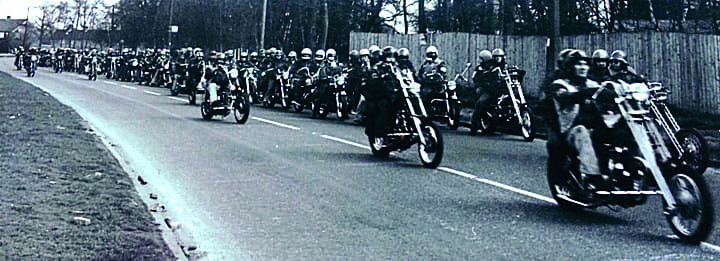
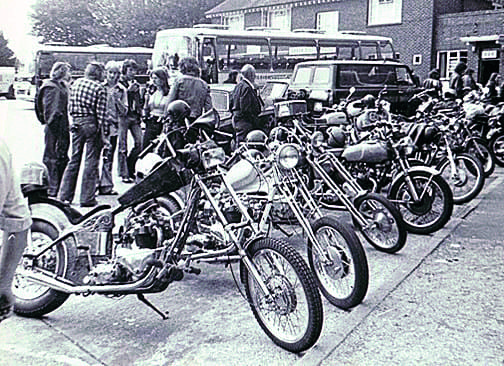
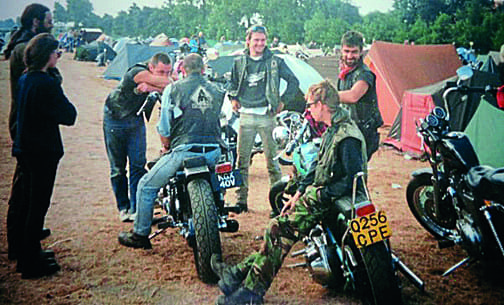
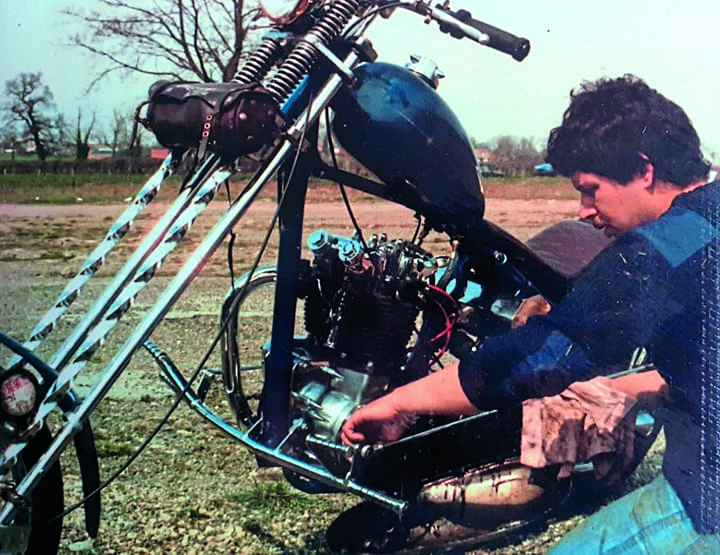
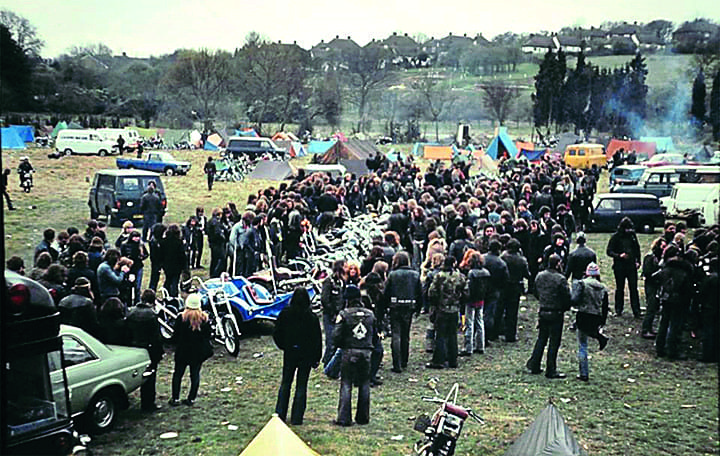
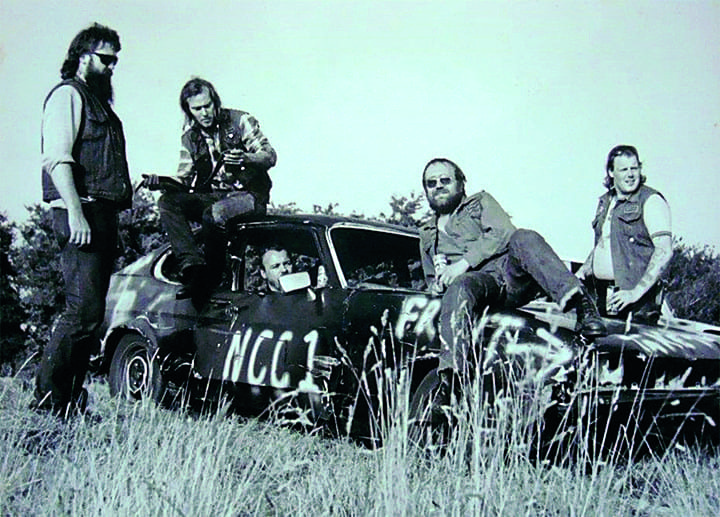

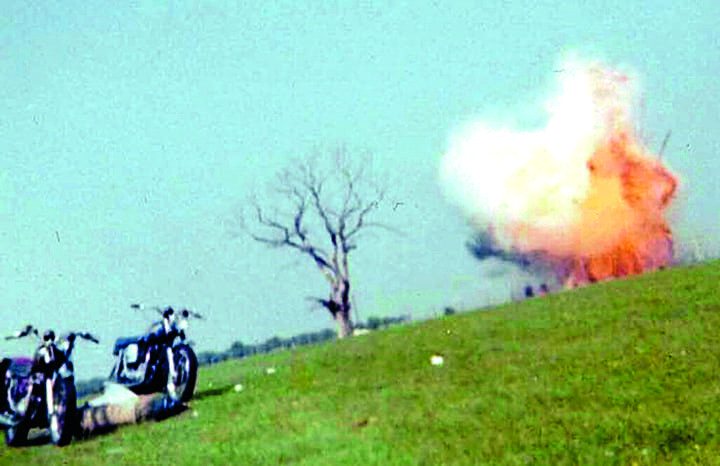
In 1995, Wiltshire Constabulary used the now infamous Criminal Justice & Public Order Act 1994, section 63, to get the Easter Run shut down, so the event was moved to Cublington with barely a day’s notice. Apparently the Wiltshire Chief Superintendent phoned Thames Valley Police HQ to warn them the Club were coming, and the Head of Thames Valley told them there was no problem whatsoever with them coming. The plan to buy land in Yorkshire (called Plainsville) was approved, and the Whitsun Run went there for the first time. August saw the Chopper Club Wales Independence Run held in Wrexham, and Chopper Club Norway was founded in December.
1996 was Chopper Club Luxenbourg’s 10th anniversary Run, and Bill Gill was awarded his Honorary Life Member status, while BSH started sponsoring the late, lamented Ian Kilner, NCC Northants, aboard the legendary Diamond Missile drag bike. Oh, and 50 NCC members helped Iron Maiden celebrate the release of their compilation album ‘Best of the Beast’ by accompanying them and a 12-foot tall Eddie into the heart of London (where someone did a burnout on the marble steps into EMI Records). Finally, towards the end of the year, Mat stepped up to be National Chopper Club President.
In ’97, Nige Bamber, Boots, Hank and Raaf from CCN were awarded Honorary Life Member status, joining Bill Gill in the Club’s highest accolade. The first Norge Run was held (apparently, the faces of the Norwegian Customs, as hundreds of Clubs rolled off the ferry at Stavanger, said it all).
In ’98 at the Suffolk Run, a Spitfire and Lancaster did a flypast, and there were three Continental Runs (Germany, Belgium and Holland), and at the Silver Jubilee Mega Run and the NCC 25th Anniversary at Cublington, Sam Brown played the main stage. Tarranis MC in France showed interest in joining Chopper Club, and that year MAG stopped allowing any back-patch clubs to their events, so the Chopper Club stopped going to them. It wasn’t aimed at them, but at certain others, but it was a matter of principle. Chopper Club Scotland became independent, too, and Ian Kilner’s drag bike, the Diamond Missile, was bought by the Club.
In 2000, Chopper Club Germany gained independence; NCC Vectis (Isle of Wight) was formed; and West Sussex changed to South Downs. East Herts was changed to South Cambs, and Herts was amalgamated with South Herts. The Club were invited to attend the Pecquencourt Custom Show, and took 25 of the best bikes to show to the 45,000-plus visitors.
2003 was 30 years of the National Chopper Club, and a major party at Cublington, and in 2004, the Club lead the speedway riders into the Millennium Stadium in Cardiff for the World Speedway Championship races, which was broadcast on live television, In September, Chris stepped up as President as Mat retired (and was awarded Honorary Membership).
In 2005, CCN’s 25th anniversary Euro Run at Utrecht had the best attendance for many years, and Club copyright and trademarks were secured in 180 countries (following the diamond logo being used on merchandise in Sturgis), and new rules about Club tattoos were drafted. In 2006 CCL celebrated their 20th anniversary, and the Club fought a certain High Street retail clothes shop which was marketing and selling a line of Chopper Club Est. 1973 T-shirts. The cheek, eh?
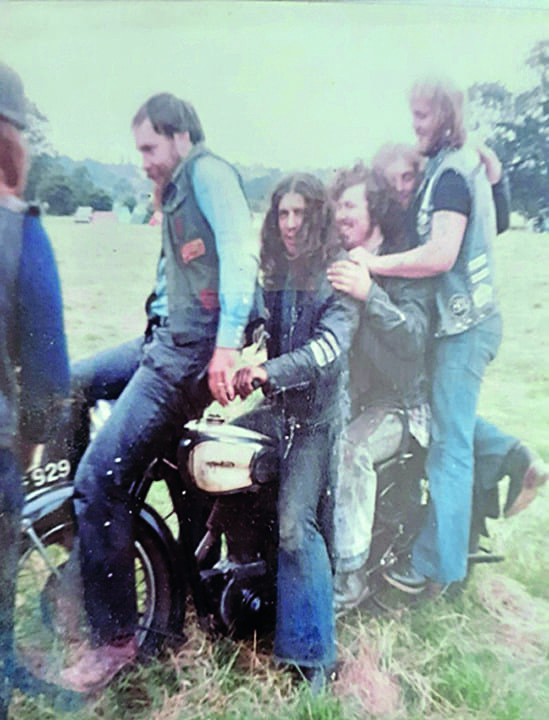

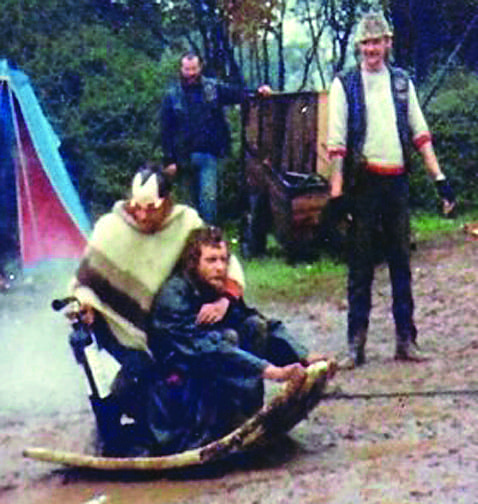
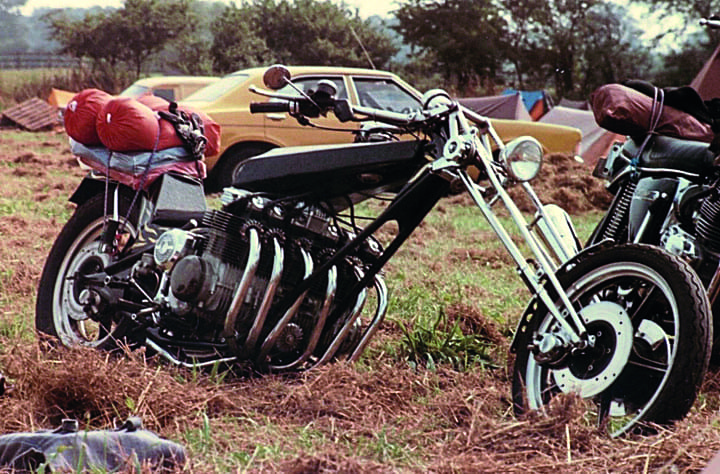

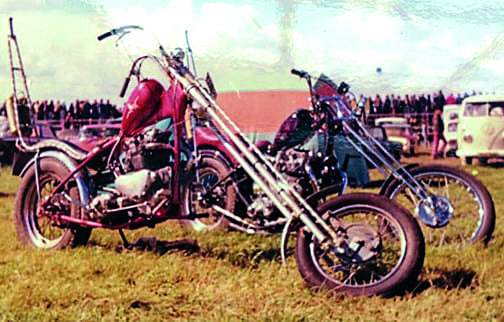
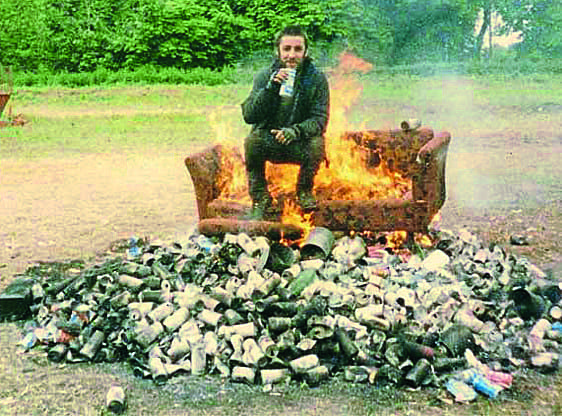
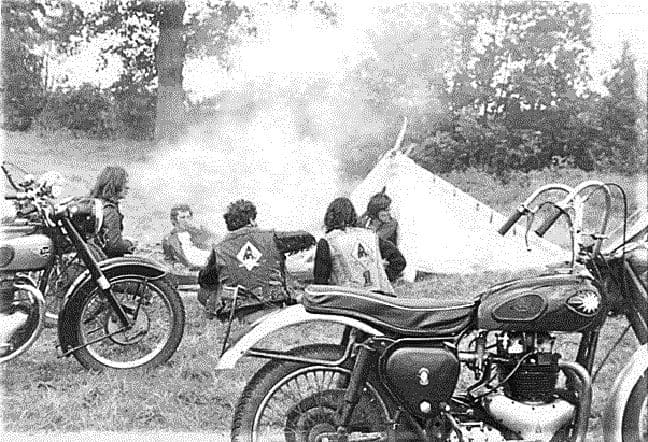
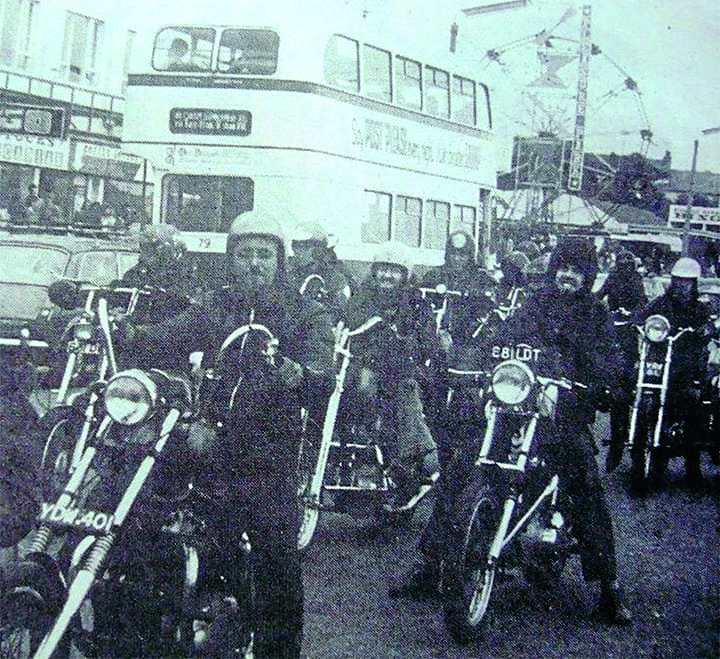
2007 saw the Club on Scrapheap Challenge on the telly, with Dai, NCC Honorary, as a team expert advising on building monster trikes – the team won. He and the Club were back on again in 2008, this time as a team expert on building superbikes, and again winning the challenge. The August Run, the NCC 35th anniversary at Cublington, blew everyone away from start to finish with big top-style marquees with tiered seating; a small cinema showing old Run videos; rave tent; clay pigeon shooting; and a sea of custom bikes. In 2009, the Euro Run was to Ireland to celebrate Chopper Club Ireland’s 20 years of independence, and 30 years in Chopper Club.
In 2010, a Memorial Day held at Cublington in July in a corner of the field dedicated to members who’d passed away developed into Lost Brothers – now an official weekend in the Chopper Club calendar. In 2011, there were twenty-two public custom shows hosted by the various counties; Chopper Club Macedonia was officially formed, which took the Club into the Balkans; and Houdi became National President as Chris stepped down.
In 2013, the NCC was 40 years old and big plans were laid for the NCC Euro Run later in the year on August Bank Holiday at Cublington. The Club had just two weeks to build five marquees, with a circus big top and two bars. The field was full to bursting point with tents and bikes, and The Blockheads (and a mariachi band) played. This was the first big Run I’d been to, and it completely blew me away – incredible event!
In 2014 the Euro Run was in Belgium, although Nederland’s earlier one was well attended, too, and in 2015 they bought Area 33 in the north of the country (their York land having been sold).
In 2018, the NCC 45th anniversary Euro Run was held on their own land in the north, Area 33. It was featured in 100% Biker by Del Hickey, with a five-page spread stating: ‘The Club is one which has been an innovative, inspiring, and enduring force in custom motorcycling in this country and abroad.’
In 2020 Covid hit and so pretty much nothing happened – runs and custom shows were cancelled, Clubhouses closed, international travel was banned. On a positive note though, a planning permission battle’d been fought, and won, and NCC Ribble Valley started to build an ‘agricultural barn’ on Area 33.
2021 was better later on, and they were able to hold two Runs: one to Wales for the Euro Run over the August Bank Holiday celebrating 30 years of CCW, and another on their own land in Devon, and over these two Runs, 46 back-patches were presented, including three from France and two from Thailand, and 69 Long Service awards.
2022 started with high optimism at the thought of getting back to doing what they do, and I went along to the first Run at Cublington, hosted by NCC Essex, and covered it for BSH. NCC custom shows were well attended over the summer, thanks to blue skies and heatwaves, especially for NCC Dorset and their first Chopper Show. Chopper Club Belgium hosted the Euro Run, with Chopper Club Macedonia (who’d ridden 2,500km to be there), and Chopper Club Germany held an event in the UK at the NCC Shropshire clubhouse.
And so into ’23 – the 50th year of the NCC. There were, again, big plans, but before that there was a party in Asia by Chopper Club Thailand (yes, you did read that right – Chopper Club Thailand!), the Kernow and Devon Run (‘Dude, there’s a chicken in my tent… a f**king chicken!’), and the NCC Ribble Valley and the Northern Monkeys Whitsun Run. The 50th, in August, was the biggest party the Club’s ever seen, but you can read all about that on the pages preceding these, assuming you haven’t already anyway.
This is a very condensed history of the Chopper Club, very condensed indeed, but I hope it gives you a flavour of what is, basically, the biggest custom bike club in the world. I’m not really a club person myself, but I’ve a lot of time for them because they’re into what I’m into, custom bikes, and I’m glad that it’s us lot in the UK who have such an organisation. Will they make another 50 years? Given that most of us, whether we’re Club or not, are as old as God’s dog these days, and that bikes, real bikes, bikes with engines, are looking to be a thing of the past in the not-too-distant future, I kind o’ doubt it, but I suspect they’ll make another ten or fifteen, and I’d like an invite to their 60th, y’know?

